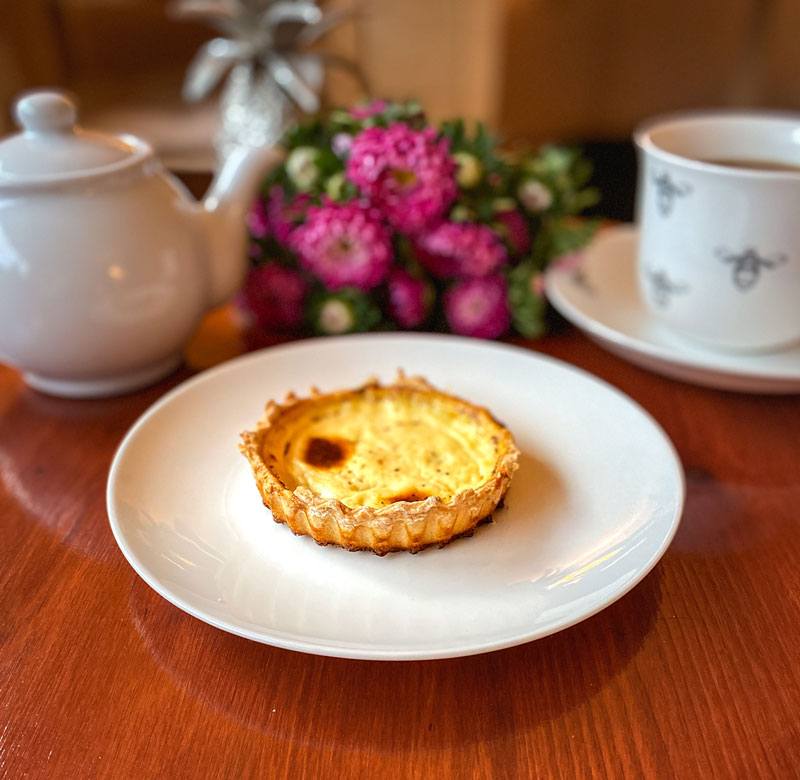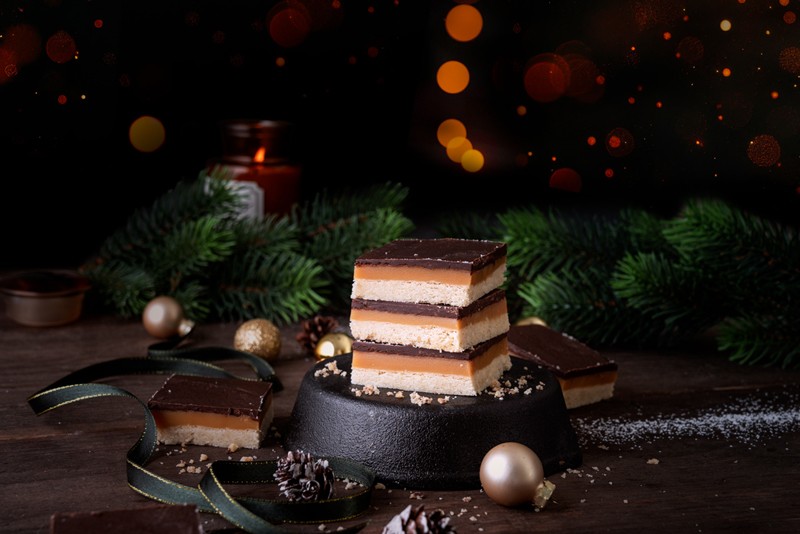Millionaire’s shortbread may not seem to be very Christmas-y at first glance. However, the…
The Custard Tart
If there is any tart that the British regard as a classic British tart, it is the custard tart. You can get it in almost every bakery and cake shop in the UK and indeed its greatness lays in its simplicity. I have no idea why I have not made it before, so it was high time I tried a recipe. You know what! It is amazingly easy to make.
But first let’s have a look at its history.
Custard tart resembles the Portuguese pasteis de nata (aka pasteis de Belem) the egg tarts of Hong Kong and Macau. There is one major difference though as far as the English and the Portuguese versions are concerned: the English custard tart is made of crust pastry and topped with nutmeg, while the Portuguese pasteis de nata is made with puff pastry and topped with cinnamon. As Hong Kong was a British colony it followed the English variant, and Macau having been under Portuguese authority, it followed the Portuguese recipe, albeit since 1989 only! A British pharmacist who had been living in Macau for a long time, went on holiday to Portugal and tried the pasteis de nata and prefered the egg tarts made with puff pastry and introduced this version in Macau. The other difference between the European and the Asian recipes was that in Asia they used lard instead of butter. It sort of makes sense as butter was not available in Asia and importing butter was not viable due to the long transportation.
After all this, you could ask the question, which one came first: the English or the Portuguese tart? Or, is the custard tart English at all?
In the 18th century, the monks in Portugal used egg whites to starch the clothes which resulted in a huge leftover of egg yolks. Nothing goes to waste, so they started to make egg tarts, which they either ate themselves or, sold them. The centre of making egg tarts was at Jeronimos monastery in Belem, close to Lisbon.
In England, custard tart was served at the coronation of King Henry IV in 1399, albeit they were called ‘doucettes’ at the time which came from the French word ‘doux’, meaning sweet. This does not mean that the tart itself had French origin – NB many words in English came from French.
All in all, it looks like the custard tart has indeed English origins.
Let’s see how to make custard tarts – you will be surprised how easy it is.

INGREDIENTS:
(for 10 tarts of 6cm diameter)
The Case
90g plain flour
12g ground almond
60g butter
27g caster sugar
1 egg
Custard
350ml milk
3 egg yolks
45g caster sugar
nutmeg
Mix the flour and the ground almonds in a bowl and add the butter. Rub it with your fingertips until the mixture looks like breadcrumbs. Add the egg and mix it with the mixture until you get a dough. Then wrap it in cling film and put it into the fridge to chill for 30 minutes.
Preheat the oven to 180C fan.
Roll out the pastry, then cut discs with a 11 or 12 cm fluted cutter. I would recommend to smear the muffin tin with butter so that it does not stick. (I used non stick parchment paper stripes but it still stuck to the tin.)
Warm the milk slowly in a saucepan until it is warm. Mix the egg yolks and the sugar then add the warm milk step by step and stir well. Sieve the custard by using a fine sieve to remove any bits.
As per the original recipe the custard should be transferred into the tarts and then baked. My experience is that this way the dough might not bake well, therefore I would pre-bake the tart for a few minutes and then would fill them with the custard. Sprinkle some ground nutmeg on the top of the tarts before baking.
Either way, it has to be baked for 25-30 minutes or until they are done.
~
Custard tarts are best when they are either luke-warm or cold. They must be consumed within one or two days but I am sure that will not be an issue as they are really good.
Enjoy!




Comments (0)